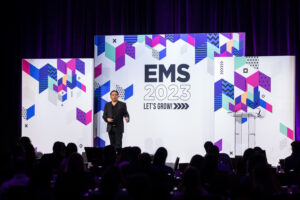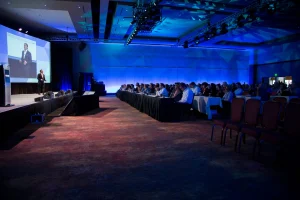Guest post by Scott Forshay, creator and editor of mobi.luxe. Follow him on Twitter @scottforshay
There is no first, second, or third screen; there are only screens. Regardless of their uniqueness in form factor or function, these connected screens are simply humanized interfaces allowing us to communicate with and experience a digitally optimized world.
While much has been made of defining the distinctions between the various connected interfaces, be they mobile devices, tablets, connected television, etc., what’s been lost in the debates over how best to utilize each distinctly is how best to address the radical shift in digital user experience expectations and screen agnosticism. How do we address this fundamental shift from a technology-centric marketing model to one of experience centricity?
In ignoring this experience-driven (r)evolution, marketers and technologists alike have chosen the path of least resistance and created additional siloed channels for consumer engagement, dismissing the subtly nuanced gray matter that exists between disparate channels made up of situational determinants and connected consumer behavior.
Existing models of ‘cross channel’ engagement, from a user’s perspective, render no more than a dizzying array of disconnected experiences, like random staccato plots on a digital map void of navigational directions for how to get from one point to another. Connected consumers require a seamless transitional experience from device to device, from interface to interface, therefore marketing strategies employed specific to a single device are fundamentally flawed. Each device sojourns the journey between consumer and brand, but this momentary device-specific experience does not define the experience.
Marketers in this new order of constant connectivity must devise strategies for a multi-screen consumer experience, allowing for the narrative of the brand to be transported from touchpoint to touchpoint in a transmedia engagement model where the technologies utilized are no longer the focal point. The consumer experience is the primary consideration and that experience is, by its nature, transitional. The success or failure of any future marketing effort will be defined in the execution of transitions; the transitions from medium to medium, dialogue to dialogue, and from context to context.
This new model of transitional marketing is dependent on accessibility and anticipation. Accessibility is the foundational concern addressed by mobile sites, tablet apps, optimized campaign microsites, etc., but the key to successful transitional marketing is anticipation. Anticipating that a consumer is on her tablet device when your commercial airs. Anticipating that the needs of consumers before 8:00am and after 5:00pm are more time sensitive and experiential in nature. Anticipating that entries in a consumer’s calendar could benefit from an additive offer. Accessibility requires an understanding of connectivity and content. Anticipation requires an understanding of character and context.
To flourish in this new transitional multi-screen environment, marketers must be prepared to provide the tools to allow consumers to pull information from them when required, but they must also be prepared to initiate engagement with contextual relevance and personalization. Anticipating transitions and communicating with consideration of context is where the battle for consumer hearts and minds will be won. Technologies and products can be commoditized, experiences cannot.
It is important to remember that experience is not a product of technology; it’s a product of emotion. From positive emotions come connections, and from connections come relationships. And isn’t building relationships with consumers the end goal anyway?
Image Credit: Shutterstock






I truly enjoyed this post. As technology as evolved, marketing as also changed greatly over time. Customer relationships have also changed. Is there a specific brand or topic that you believe has been able to effectively develop a multi-screen customer experience?
Thank you, Dara! It’s my opinion that the entirety of in-market executions, specifically speaking of mobility solutions, have been exercises in building the structural foundations necessary for future engagement. Producing mobile sites and apps represent these foundations of accessibility. As the market continues to evolve, driven primarily by increasing user demand for contextually relevant and additive brand/consumer communications, marketers will need to evolve to models of anticipation. Given the wealth of information housed on device, specifically time and space information, marketers have many of the rudimentary tools required to anticipate transitions and deliver experiences unique to the medium used to communicate. It will ultimately require a shift in mindset from technology-centric models to experience-driven user- centric models at the forefront of consideration.
Couldn’t agree more to this: “It is important to remember that
experience is not a product of technology; it’s a product of emotion.”
Briliant post, Scott!
Thank you very much, Dave!
Great article for marketers, should take advantage by reading this one.
I am also into blogging for last 2
years. This is one of the useful articles I found during search.
This is so right on…bravo, actually at eBay we talk in terms of “Connected Commerce,” where the Customer Decision Journey travels across touchpoints, whether its in bed with the iPad or in the mall with the iPhone…or on your laptop at work. I look at Social Commerce as bridging these experiences across touchpoint and across graph (social, interest, opinion, or otherwise) delivering contextual authenticity to experiences (for example a woman shares a purchase to a friend for affirmation to receive feedback and acknowledgement of taste). As far as brand is concerned, I must dive into the roots of social from a philosophical stand point: Identity and the quest for image (who I am in the context of a society) drives social…brands must cultivate their identity and thrive as an entity with a true relationship to their consumers (of product, experience, or service). I think of products from the standpoint of a movie director, creating experiences that lead consumers through a transformational journey to delight, connect, enable, and give a deeper sense of meaning to life. Good stuff…
Thank you, Sir!